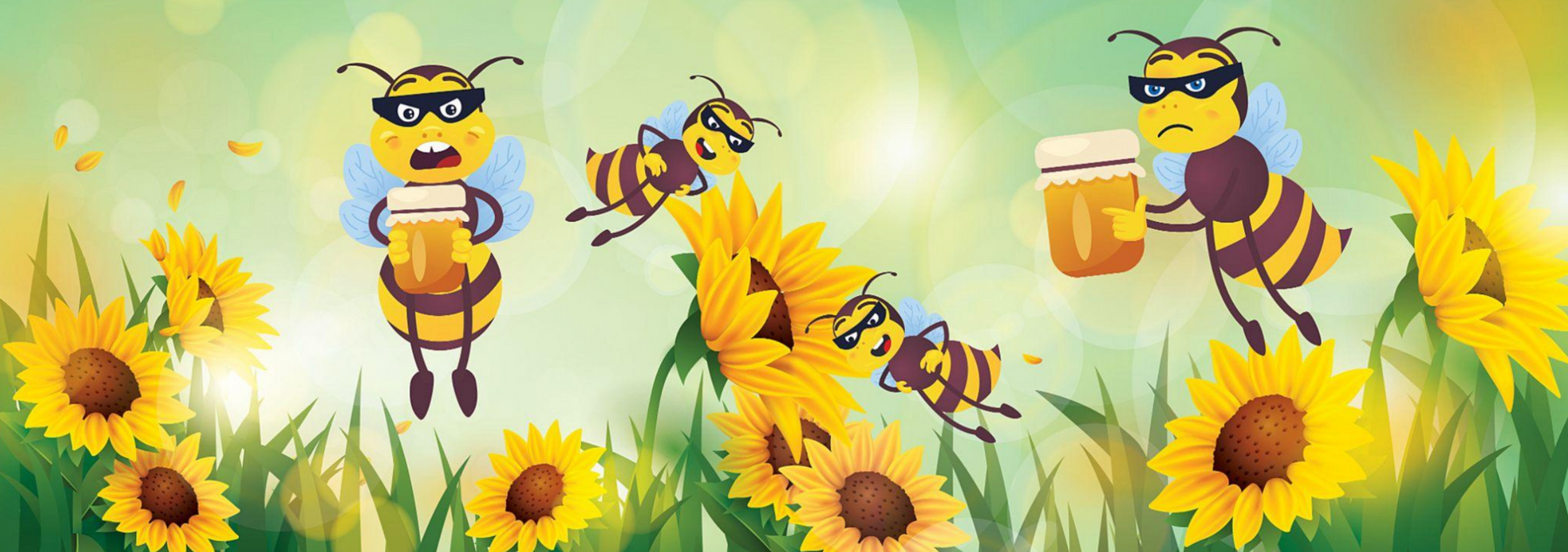
Don't Let Your Hive Become A Victim Of Robbing Bee
Did you hear about the broad daylight robbery?
We are talking about the robbery in your hives, of course. With the change of season from summer to fall “hive robbing” becomes a real problem if not dealt with properly. So, what preventive measures have you taken already? See if you’ve considered the following.
🐝 Did you try using entrance reducers?
🐝 Did you limit hive inspection?
🐝 Did you place your external feeder too close to your hives?
🐝 Did you try using a robbing screen?
- Just like your home is protected by walls, gates, security systems and cameras, your hive needs protection too. So, why not reduce the chances of these small criminals entering your hives in the first place? Especially if the hive is small and weak. An entrance reducer will give the guard bees time to inspect entrants before letting them in. That way, the bees that live in the hive can still come and go easily while keeping the robbers away!
Prevent crime by using these entrance reducers.
- Did you invite the criminals? Unintentionally, you might have! It happens when you inspect a hive during a nectar dearth. When you open the hive during this period of time, it’s like an open invitation to other insects as it unleashes the scents and aroma of honey into the air. Would you show off jewels to a robber? The same theory applies here. If you just have to inspect your hive, do it quickly and keep robbing to a minimum.
- You should bee concerned about external feeders as well. It’s like a feast to robbers including wasps and hornets. When they recognize the smell of the syrup, they won’t understand the boundaries! But, if you have a struggling hive that needs supplemental feeding, internal feeders are always a good idea! If you do feed externally, keep the feeder a far distance from your apiary. This will discourage robbing.
- Let’s confuse the robbers! Use a robbing screen so that when the bees are coming for the hive relying more on scent than sight, it gets in their way. They will be confused not knowing what to do and how to enter. But our resident bees will know how to get in and out of their home.
General Questions About Hive Become A Victim Of Robbing Bee
1. What are the signs of hive robbing?
Signs of hive robbing include aggressive bee behavior around the hive entrance, bees fighting or grappling each other, increased activity with bees flying erratically, torn pieces of wax on the ground near the hive, and dead bees outside the entrance. Additionally, you may notice bees with their abdomens bent downward as they are trying to repel robbers.
2. How can I distinguish between robbing and regular foraging?
Robbing typically involves frantic and disorganized bee behavior, with bees darting around the hive and fighting. In contrast, regular foraging bees fly in a more deliberate and calm manner, entering the hive smoothly. Also, during robbing, you might see more bees crawling around the hive and attempting to enter through cracks or crevices rather than the main entrance.
3. When is the most critical time to watch for robbing?
The most critical times to watch for robbing are during nectar dearths, particularly in late summer to early fall when natural food sources are limited. Robbing is also more likely when you have weaker hives or after opening the hive for inspection, which can release honey scents that attract robbers.
Bee smart to get this robbing screen!
Want to learn more about these crimes?



Leave a comment